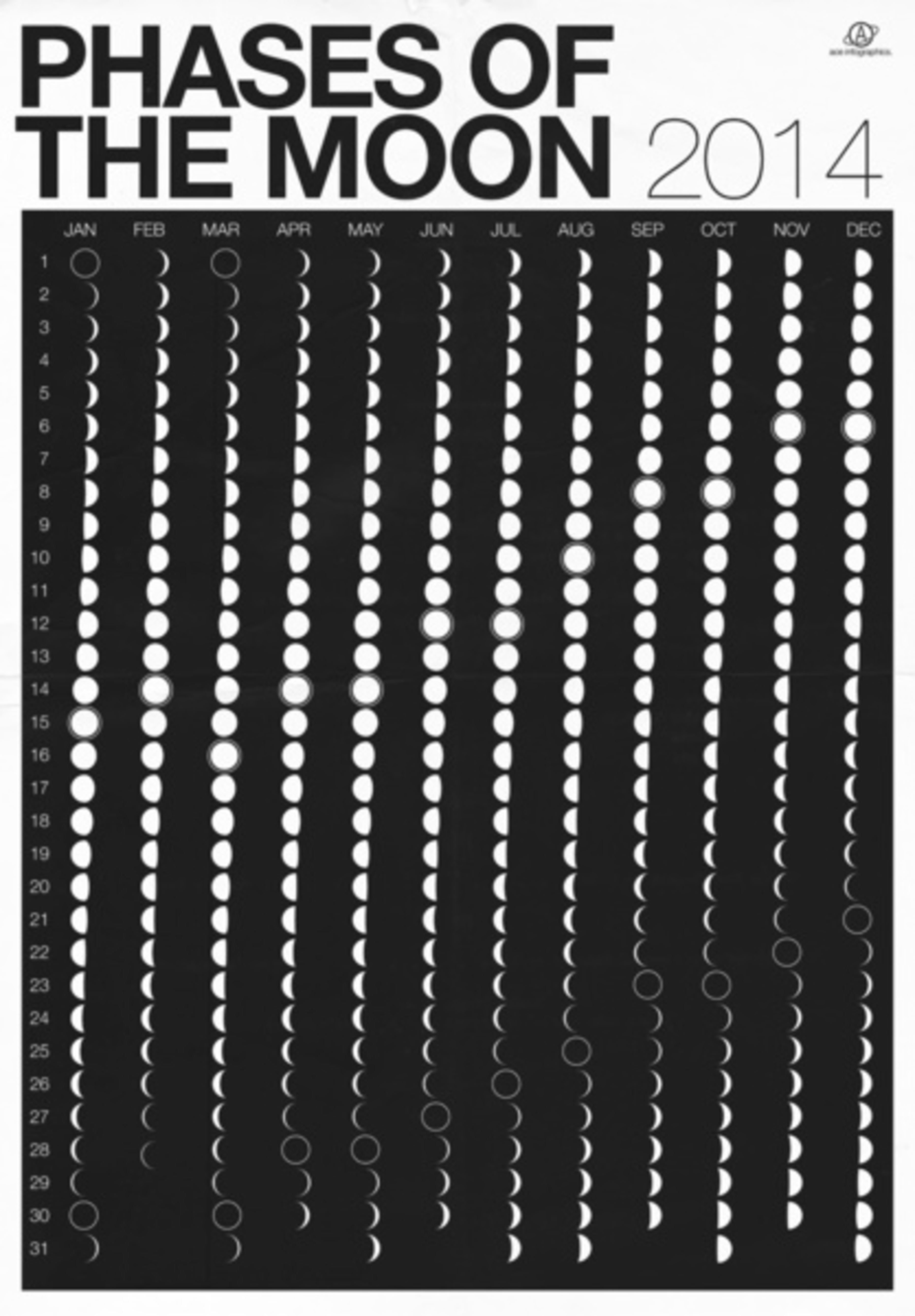A mesmerizing moon cycle

We know how the moon waxes and wanes over a period of approximately 29.5 days. It happens so consistently that we rarely take notice of it.
In this graphic, it lays out the different phases of the moon over 2014, and shows us how the cycle shifts. Doesn't this image look like it is glowing and moving around? It seems hard for us to focus on it, and our eyes prefer to move around the image. Why do we feel that this is happening?
Image credit: Nicholas Ace Wiinikka
No vote yet
1 vote
Easy Math Editor
This discussion board is a place to discuss our Daily Challenges and the math and science related to those challenges. Explanations are more than just a solution — they should explain the steps and thinking strategies that you used to obtain the solution. Comments should further the discussion of math and science.
When posting on Brilliant:
*italics*or_italics_**bold**or__bold__paragraph 1
paragraph 2
[example link](https://brilliant.org)> This is a quote# I indented these lines # 4 spaces, and now they show # up as a code block. print "hello world"\(...\)or\[...\]to ensure proper formatting.2 \times 32^{34}a_{i-1}\frac{2}{3}\sqrt{2}\sum_{i=1}^3\sin \theta\boxed{123}Comments
The eye is taking time to receive all of the information so that the brain can interpret it so it the eye looks at the graphic as an optical illusion.
Optical illusions in general are traits we inherited from our evolutionary past, that's why we get that sense of movement which could be a handy ability for noticing predators and prey.